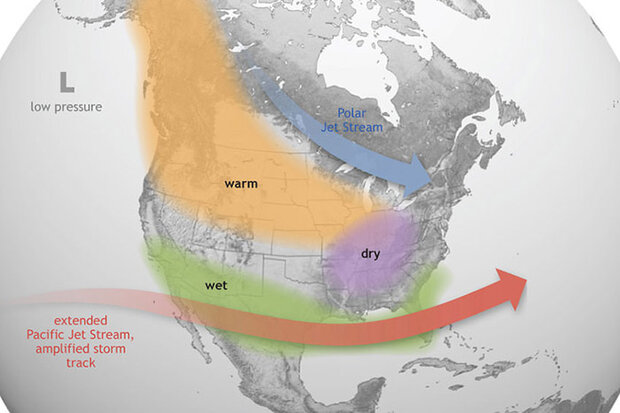New El Niño model analysis advances key source of prediction skill

El Niño and La Niña conditions can make their presence known thousands of miles away. Credit: NOAA Climate.gov

El Niño and La Niña conditions can make their presence known thousands of miles away. Credit: NOAA Climate.gov
Hurricanes, droughts, floods, and severe weather in the United States are all driven by what's going on in the Equatorial Pacific Ocean -- whether it is warmer, as in El Nino conditions; cooler, as in La Nina conditions; or normal. The sea surface temperatures (SSTs) in this region can either add heat to (El Nino) or remove heat from (La Nina) the atmosphere altering global weather patterns. But the connection between the remote behavior of equatorial Pacific SSTs and the weather and climate experienced 4,000 miles away in the United States is driven by a long chain of ocean-to-atmosphere links that climate models do not always capture.